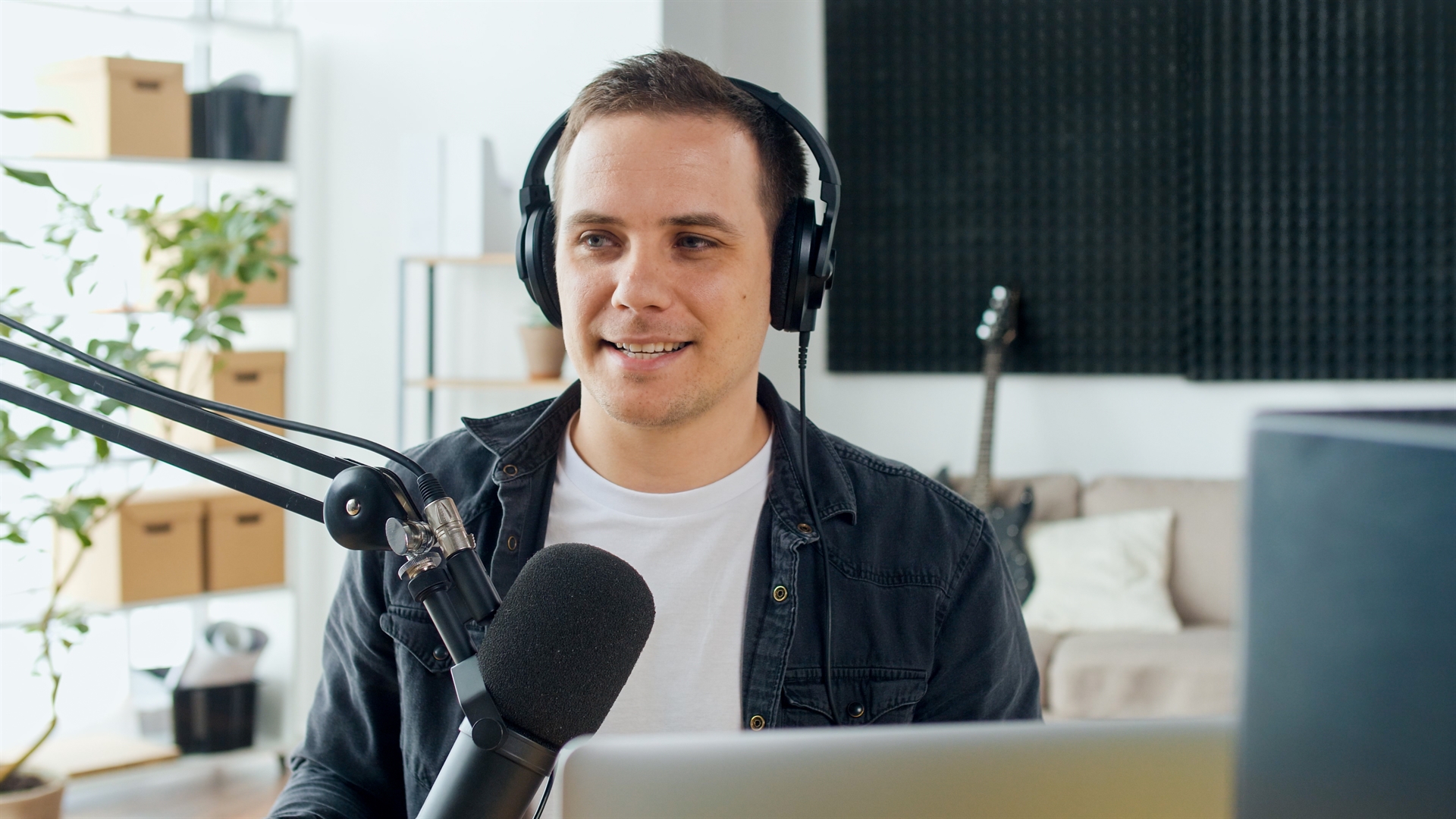If you’re wondering how to improve the online presentations you make from the comfort of your home, I have one tip for you: invest in a good quality microphone. Better sound quality will guarantee that your audience’s listening comfort grows exponentially. It’s a big step towards gaining more of your audience’s attention and engagement.
Thanks to a good quality microphone, your audience will not only hear you better, but they’ll also perceive you as a professional. The quality of your audio is much more important than the quality of your video. So, if you’re wondering what to invest your money in – a webcam or a microphone – there’s only one correct answer: a microphone.
So, why should you invest in a microphone?
First of all, because the computer mics usually cannot provide good sound quality. Does your computer have a good microphone? Just test it!
However, in my experience, computer mics are usually of low quality, especially when it comes to PCs. Apple computers have a slightly better microphone, which is enough for videoconferences and online meetings where you don’t plan on talking for hours.
However, if you’re planning on running a day-long training, you should be absolutely sure that your microphone will help you rather than cause you issues.
Remember that the sound quality significantly impacts your audience’s level of energy and engagement. Low sound quality makes people feel tired, bored, and unengaged. An effective presentation requires good sound – one that is loud and clear, with no noises, echo, or interferences.
What microphone should you buy?
There are many different microphone types, and it may get quite confusing and overwhelming for a newbie. For example, there are condenser microphones, dynamic microphones, omnidirectional microphones, etc. I know that you’re probably not interested in technical details, and you expect specific and practical advice on what microphone to use for webinars or online meetings.
The answer is as follows: the optimal choice is a condenser microphone connected to the computer via a USB cable.
Why are all the other microphones a poor choice?
You can find completely different advice on different websites. There are, for example, those sites that advise you to get an audio mixer to eliminate reverberation. It may be a good solution if you want to run really professional webinars, but a rather expensive and completely unnecessary one. Reverberation can be easily eliminated otherwise: just make sure that only the presenter has the microphone turned on. If there’s any reverberation, the moderator who’s authorised to do so can mute the other participants, and the echo will disappear. This is done in just a few clicks and without any unnecessary expenses.
A microphone with headphones is also a poor choice. Although it automatically eliminates reverberation, its sound is usually poor quality. It’s flattened and muffled. You can hear the speaker clearly, but the audience will be exhausted after a few hours of listening. To have a really good microphone like that, you’d have to spend a few hundred euros.
Therefore, it’s better to buy even a cheap USB condenser microphone.
What microphone do I use?
When I run my trainings, I use the Trust GXT 232 Mantis microphone. It costs less than 30 euros, and in my opinion, it’s the optimal choice that fits anyone’s budget. The sound is clearly audible, with no muffling or echo.
Sometimes, I also use the Blue Yeti microphone. This is a more expensive option, but it provides an almost studio-like listening experience. This is a typical microphone for podcasts and other studio recordings. It also works well for webinars, but because it’s very sensitive, it’ll pick up on every sound in your environment. So you’ll need to make sure that you’re in a very quiet room while using it.
The acoustics in the room
If an echo creeps into your recordings and webinars despite having a good microphone, it’s likely because of poor room acoustics. An echo is created when the voice bounces off flat walls and causes the sounds to be unnecessarily lengthened. This is most often because we have too little furniture in the room, and there are no carpets or curtains. Furnishings, mainly made of soft fabrics, absorb sounds and prevent them from circulating in the room.
If you have an echo problem, you can eliminate it in several ways:
- Place a carpet or rug on the floor
- Cover the windows with curtains
- Install a large chandelier
- Place more furniture in the room
- Hang pictures on the walls so that there are no large flat surfaces to reflect the sound
- For an even better effect, install acoustic panels on the walls. They’re made out of light and soft foam that sticks to the walls and effectively reduces reverberations and echoes.
And since you’re already setting up your home studio, it’s time to learn how to create stunning professional presentations. It’s time to check out my Professional PowerPoint Presentations online course!
This two-step course will take you from A to Z of creating professional PowerPoint presentations.
Step 1: An online course with key principles, tricks, and tools to create stunning presentations
Stage 2: Mentorship via email consultations to help you practise everything you learned from the course. During this stage, I’ll provide you with my best tips to improve your presentations.
To get started, you can sign up for a free demo of the course, 7-day PowerPoint Tips & Tricks. And if you like it and want to get deeper into the subject, sign up for my complete PowerPoint Presentations course.

